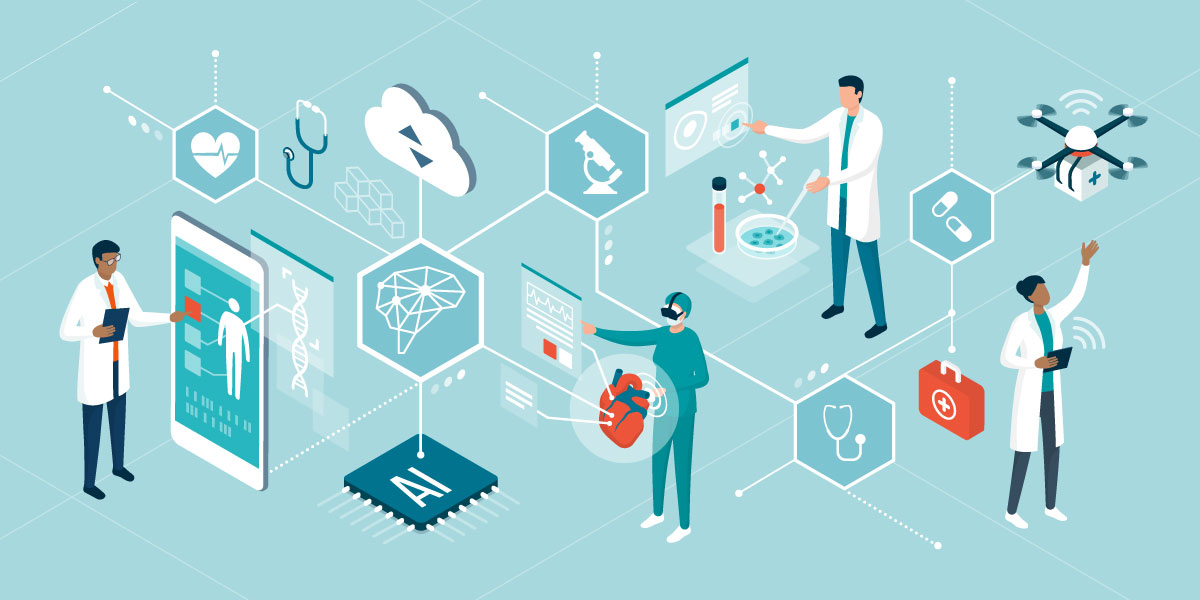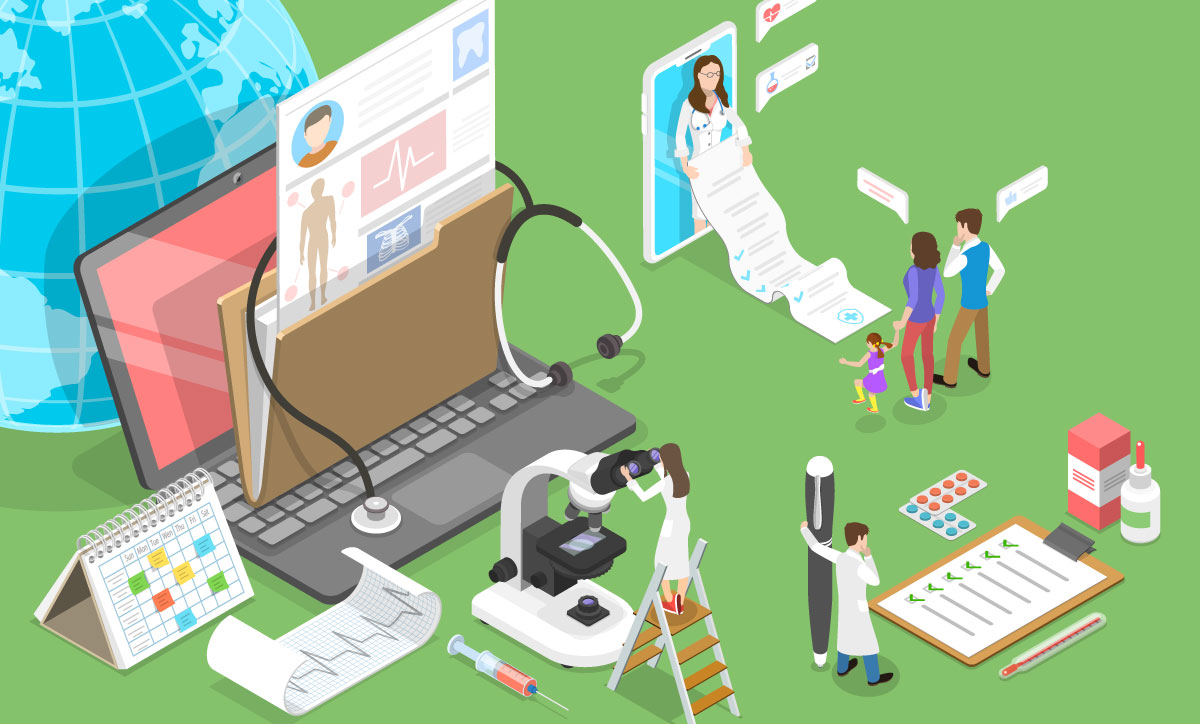Abstract
All industries, more and less, have a long history. Still, as humanity has had health issues from the first moments, the medical practice is even older than the history. We must track ancient medical evidence from drawings, body remaining, and archeological surgical tools. Still, like all other practices and industries, technology came to help; IT, IoT, AI, and blockchain technology are among these new high-tech approaches.
According to the IBM website, one of the biggest service providers in blockchain as a Service, the three main benefits of Blockchain in health care are Trust, Security, and Transparency. To verify if it is correct or not, we should dive into the history of healthcare and then investigate how blockchain technology can help the healthcare sector improves.
Introduction
The decentralized system based on blockchain terminates central administration, significantly reducing the risk of hacking the central server or fraud in the healthcare system. Besides, there are several benefits for all industries, and the healthcare sector is not an expectation. Blockchain makes information transfer faster, keeps patients’ confidential information safe, reduces costs, etc.

Blockchain Technology and Healthcare Sector
Getting help from the blockchain industry makes the system more secure, accessible, reliable, and efficient.
Although blockchain is not a database, the outcome is the same because the mechanism of the blockchain is Distributed Ledger Technology, which gathers information in a block, and adds to the chain of previously chained blocks.
Blockchain follows an irreversible path that recorded information will never change, which reduces many risks in the network. Besides, the decentralized soul of the blockchain technology stores all changes and transactions in all participating nodes worldwide, which significantly reduces many risks such as hacking, changing information once recorded, or loss of data.
In addition, the network’s speed and readiness to present the required information increases the rate, which is a critical factor in medical practice. Consistently, people who had the doctor in ancient tribes to our modern era have some ethnics that are essential.
For example, when experts in a medical institution are studying an innovative remedy for a disease or working on a new method, and somewhere else, the medical staff is struggling with a fatal illness of a patient. Blockchain networks help in this situation, and there is no need for a direct connection between two teams. Suppose the newly invented approaches have sensible results. In that case, everyone across the blockchain network will have access to the information and can deny, accept, change or add more achievements to the result of that experiment.

Main achievements of using Blockchain technology in the healthcare sector:
EHR: Electronic Health Record
EHR or Electronic Health Record is a blockchain-based facility for using blockchain in medical practice.
As blockchain is an ecosystem for recording information and accurately storing further changes, it will be an excellent assistant to recording all individual treatments records, with all the advantages mentioned above, such as accessibility and low network fees.
By using blockchain in the healthcare sector, medical staff will have quick and safe access to each patient’s medical records if a patient gets medical services from different hospitals and other healthcare segment subsidiaries. people who have received medical services from health care facilities send* their clinical information from one to another. It will be more accessible and faster, more reasonable, and with no worries about storage limitations. The system automatically encrypts information and stores the processed data in all participating nodes in the healthcare sector, except that all authorized individuals have a more secure, rapid, and lower cost to the required data.
HIE: Health Information Exchange
The main goal is to share healthcare information securely.
Within the Health Information Exchange network, patient records should be consistent and available across institutional boundaries, and the terms of its access strictly dictated by the patient. The less important goal is that data should not only be shared but shared in such a way that all authorized parties can understand the structure and meaning, ultimately leading to improved data utility and patient care.
Blockchain technology can help us solve lots of our problems. Blockchain helps track and monitor monolithic programs like vaccination or medical help the countries suffering from civil wars, political crises, etc.
It also can help us track medical cargos from the origin to the intended area to avoid fraud.
History of Blockchain Technology in the Healthcare Sector
In 2012 Estonia and Maine in Tennessee state first got help from blockchain in the healthcare sector to increase the security of recording data and processed transactions. They successfully digitalized more than 90 percent of all medical information by transferring it to the blockchain.
Conclusion
Although the history of blockchain technology is back to the 1980s, the first time it became popular was when Satoshi Nakamoto changed the history of finance by launching Bitcoin. It was a good approach in different industries. Its perfect functionality convinced decision-makers to use this technology in the healthcare sector to increase medical records’ security and scalability, including patients’ medical history, new findings, and science or medical monitoring processes. At the same time, the data transfer is safer and faster.